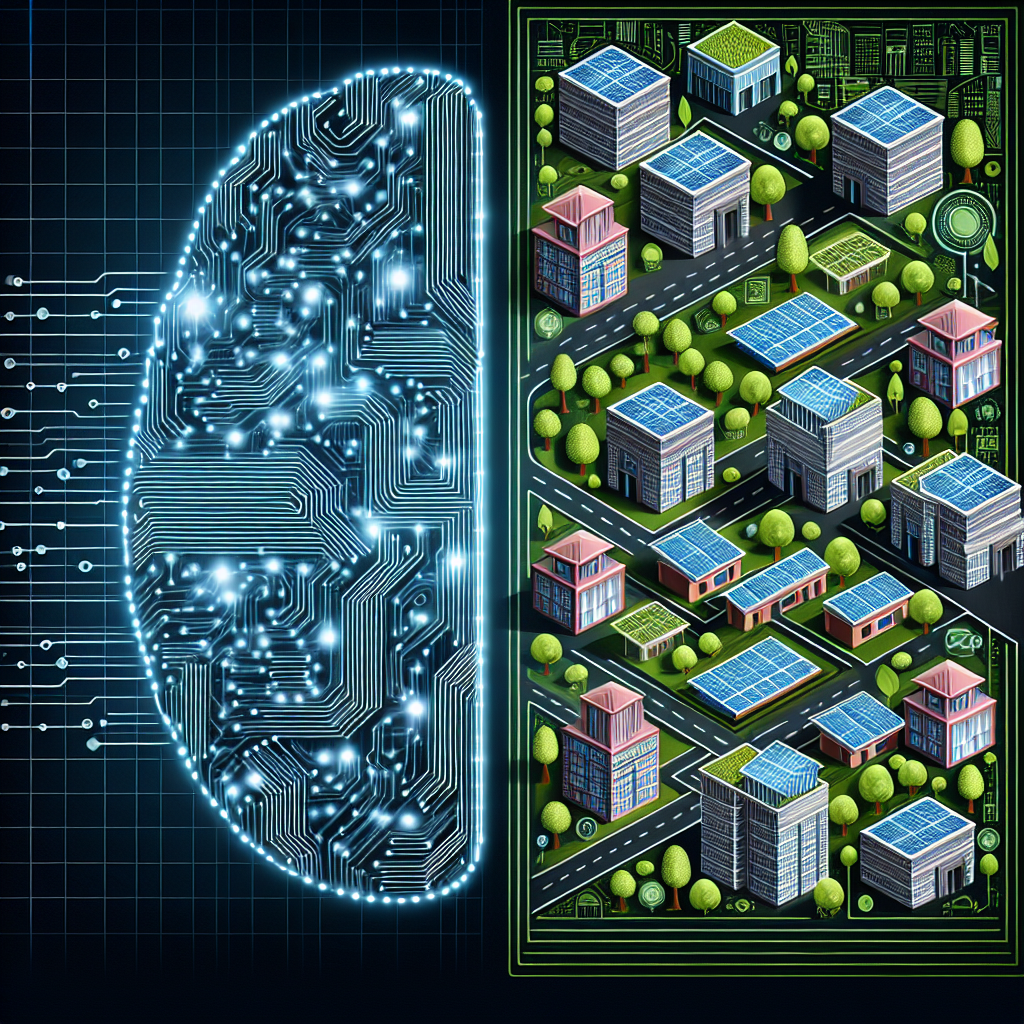Introduction
In recent years, the fields of artificial intelligence (AI) and architectural sustainability have been intersecting in new and exciting ways. AI technology has the potential to revolutionize the way buildings are designed, constructed, and operated, leading to more sustainable and energy-efficient structures. This article will explore the intersection of AI and architectural sustainability, and how these two fields are coming together to create a more sustainable built environment.
The Role of AI in Architectural Sustainability
AI technology is being used in a variety of ways to improve the sustainability of buildings. One of the key ways AI is being used is in the design phase of a building project. AI algorithms can analyze vast amounts of data to optimize building designs for energy efficiency, daylighting, and ventilation. By using AI to design buildings, architects can create structures that consume less energy and have a smaller environmental footprint.
AI is also being used in the construction phase of building projects. Autonomous robots equipped with AI technology can be used to construct buildings more efficiently and with less waste. These robots can work around the clock, increasing productivity and reducing construction time. AI can also be used to monitor construction sites for safety hazards and quality control, helping to ensure that buildings are constructed to a high standard.
Once a building is completed, AI technology can be used to optimize its operation and maintenance. AI-powered building management systems can monitor and control a building’s energy use, HVAC systems, and lighting, helping to reduce energy consumption and costs. These systems can also predict and prevent equipment failures, reducing downtime and maintenance costs.
Overall, AI technology has the potential to revolutionize the way buildings are designed, constructed, and operated, leading to more sustainable and energy-efficient structures.
Case Studies
There are several examples of how AI technology is being used to improve the sustainability of buildings. One notable case study is the Edge building in Amsterdam, which has been dubbed the “smartest building in the world.” The Edge is equipped with thousands of sensors that collect data on everything from temperature and humidity to occupancy and air quality. AI algorithms analyze this data in real-time to optimize the building’s energy use and indoor environment. The Edge has achieved a BREEAM Outstanding rating, the highest sustainability rating for buildings, thanks in part to its use of AI technology.
Another example is the Cisco Smart Building in Silicon Valley, which uses AI technology to optimize its energy use. The building is equipped with a network of sensors that monitor energy consumption in real-time. AI algorithms analyze this data to identify energy-saving opportunities, such as adjusting lighting and HVAC systems based on occupancy patterns. As a result, the Cisco Smart Building has reduced its energy consumption by 25% and saved millions of dollars in energy costs.
These case studies demonstrate the potential of AI technology to improve the sustainability of buildings and reduce their environmental impact.
Challenges and Opportunities
While AI technology offers many benefits for architectural sustainability, there are also challenges that need to be addressed. One of the key challenges is the cost of implementing AI technology in buildings. The initial investment in AI-powered systems can be high, and some building owners may be hesitant to adopt these technologies due to their cost. However, the long-term savings in energy costs and maintenance expenses can often outweigh the upfront investment.
Another challenge is the need for skilled professionals to design, implement, and maintain AI-powered systems in buildings. Architects, engineers, and building operators will need to be trained in AI technology to fully leverage its benefits. Additionally, there are concerns about the privacy and security of data collected by AI systems in buildings. Building owners will need to ensure that data is collected and stored securely and that privacy concerns are addressed.
Despite these challenges, there are many opportunities for AI technology to improve the sustainability of buildings. As AI technology becomes more advanced and affordable, it will become more accessible to a wider range of building projects. AI-powered systems can help buildings achieve higher sustainability ratings, such as LEED and BREEAM certifications, which can increase their market value and attractiveness to tenants.
FAQs
Q: How can AI technology improve the energy efficiency of buildings?
A: AI technology can analyze data on energy consumption, occupancy patterns, and environmental conditions to optimize a building’s energy use. By adjusting lighting, HVAC systems, and other building systems in real-time, AI can reduce energy waste and lower energy costs.
Q: What are some examples of AI-powered systems in buildings?
A: AI-powered systems in buildings include building management systems, energy management systems, and smart sensors. These systems can monitor and control a building’s energy use, indoor environment, and equipment performance to improve sustainability.
Q: What are the benefits of using AI technology in buildings?
A: The benefits of using AI technology in buildings include improved energy efficiency, reduced operating costs, increased occupant comfort, and lower environmental impact. AI technology can help buildings achieve higher sustainability ratings and increase their market value.
Q: How can building owners implement AI technology in their buildings?
A: Building owners can implement AI technology in their buildings by working with architects, engineers, and technology providers who specialize in AI-powered systems. These professionals can design, install, and maintain AI systems that optimize a building’s sustainability and performance.
Conclusion
The intersection of AI and architectural sustainability is a promising and exciting development in the field of building design and construction. AI technology has the potential to revolutionize the way buildings are designed, constructed, and operated, leading to more sustainable and energy-efficient structures. By using AI to optimize energy use, improve indoor environments, and reduce maintenance costs, buildings can achieve higher sustainability ratings and reduce their environmental impact. While there are challenges to overcome, the opportunities for AI technology to improve the sustainability of buildings are vast. As AI technology continues to advance, we can expect to see more buildings that are smart, sustainable, and environmentally friendly.

